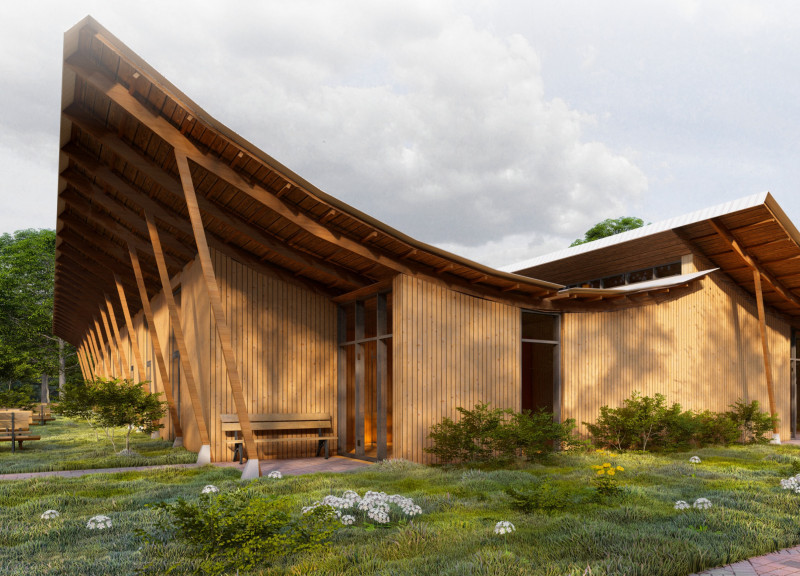5 key facts about this project
This building not only accommodates various activities, such as [specific functions], but it also stands as a model for how architecture can adapt to the needs of its users and environment. Its design emphasizes flexibility, allowing for different configurations to support a wide range of events and gatherings, making it a versatile asset to the community. The thoughtful arrangement of spaces promotes social interactions among users, fostering a sense of community and belonging.
The architectural design incorporates a range of materials that enhance both aesthetic appeal and functionality. Key materials such as locally sourced timber, reinforced concrete, and high-performance glazing contribute to the building's structural integrity while also expressing a commitment to sustainability. The use of these materials reflects an awareness of the region's vernacular architecture, providing a harmonious balance between the contemporary design approach and local traditions.
One notable aspect of this project is its unique design approach to integrating natural light. Expansive glazing allows for an abundance of daylight to penetrate the interior spaces, reducing reliance on artificial lighting and contributing to energy efficiency. The building’s orientation has been meticulously planned to blend functionality with passive solar design principles, ensuring comfortable conditions throughout different seasons. This design choice enhances the overall user experience and underscores the project’s ecological responsibility.
Greening strategies play a significant role in this architectural endeavor, as it incorporates elements such as green roofs and vertical gardens, which not only improve biodiversity but also contribute to urban cooling and improved air quality. These features showcase a proactive approach to environmental stewardship, merging aesthetics with ecological performance. This thoughtful landscaping invites biodiversity and enhances the visual narrative of the architecture.
Moreover, the project showcases an innovative use of open and enclosed spaces, which translates into a variety of experiences for its users. The transition from public to private areas has been considered with care, ensuring that spaces serve their intended purposes without compromising on accessibility. Areas designated for relaxation, collaboration, and contemplation coexist seamlessly, enhancing the user experience and fulfilling the requisite functions of the space.
The unique design language is reflected not only in its physical form but also in the way it engages with the surrounding environment. The building respects its site, incorporating existing landscape features within its design while also creating new spaces that invite exploration. This relationship illustrates a deeper understanding of site-specific architecture, where the design responds to and enhances the intrinsic qualities of its location.
In this architectural project, a cohesive narrative is crafted through the interplay of materials, light, and spatial organization. The careful consideration given to each element ensures that the architecture is not only functional but also resonates with its audience on an emotional level. The thoughtful approach to sustainability and community integration positions this project as a relevant example of contemporary architecture that aligns with the values of its users and the environment.
For those interested in further understanding the intricacies of this architectural project, it is recommended to explore the architectural plans and sections that illustrate the spatial arrangements and material choices in detail. Engaging with the architectural designs will provide valuable insights into the innovative ideas and practical solutions embedded within this work of architecture.


 Valerii Shpiklirnyi
Valerii Shpiklirnyi 




















